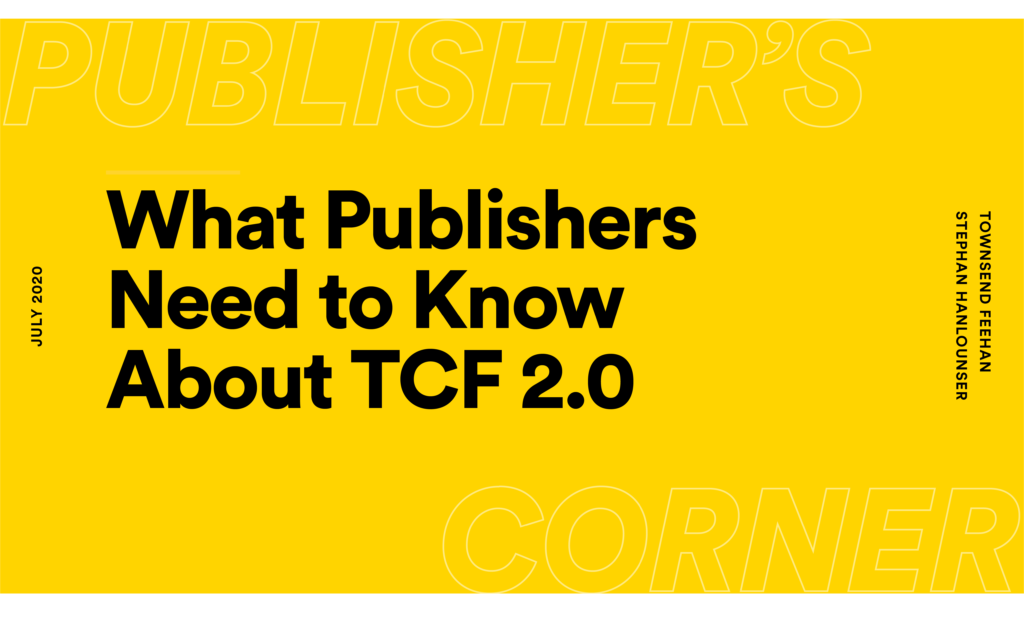In our most recent episode of Publisher’s Corner, Townsend Feehan, CEO of IAB Europe, discusses everything publishers need to know about the upcoming update to the IAB’s Transparency and Consent Framework (TCF). If you need a quick primer on how TCF 2.0 enables publishers and their partners to meet European data protection law, the first few minutes of the video will cover that—and you can also read more about what TCF 2.0 is and why you should care here.
You can watch the full video for all the details, and we’ve pulled out the key takeaways for you here.
What’s different about TCF 2.0?
There are many updates, but as Townsend explains, the biggest goal for TCF 2.0 is to make it more user-friendly. That means, for example, that legal definitions of data processing are now accompanied by more user-friendly wording that publishers can use to encourage reader understanding.
Publishers will also gain more granular control over the governance of data collection partners. They’ll be able to indicate which vendors can process data for which purposes, instead of setting the same controls for every vendor. And yes: publishers who’ve adopted 1.0 still need to “upgrade” to 2.0. If they don’t, the consent strings passed are meaningless.
Publisher revenue is (still) at stake
Nothing has changed here. Consent management is still a crucial aspect of publisher revenue. While TCF 1.0 saw slow adoption, TCF 2.0 makes it easier to allow, at scale, third party vendors to deliver services to your site.
You (still) need a CMP
The process of GDPR compliance starts with a CMP. Thankfully, publishers now have more options than ever. As Stephan Hanlounser of German publisher ProSieben says, his company approached TCF 1.0 with an in-house CMP, but they’ve since gone third-party. Part of that is simply because the CMP market has grown. But building a CMP from scratch requires a lot of engineering legwork, and now that more solutions are available, it’s easier to find one that meets your needs. If you already use an existing third-party CMP, you’ll need to speak to them directly about transitioning from 1.0 to 2.0.
Google is coming aboard
Google was absent from TCF 1.0, which many publishers and partners saw as a huge drawback. But they’ve been highly involved in 2.0 from the beginning, which gives TCF 2.0 some serious heft, and will encourage more global vendors to join the framework. Essentially, 2.0 has much more clout than the first iteration, and stands to see far wider adoption.
The Transparency and Consent Framework (TCF) 2.0 releases on August 15, 2020. Read more about TCF 2.0 via IAB Europe.

